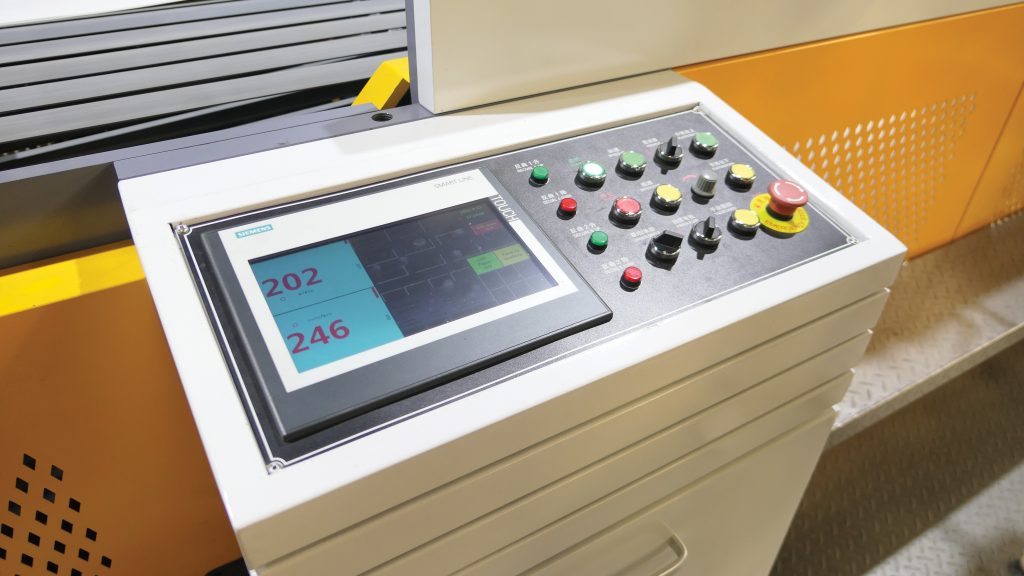Allan adds that this relentless quest to provide customers with a total turnkey solution and minimise the pandemic’s supply chain-related difficulties resulted in the splitting of jobs to help customers manage their cash flows better. ‘We’ve been blessed to navigate this difficult period through dogged determination, overcoming board supply delays by investing in a board sheeting machine, as well as improving print make-ready times and quality consistency with an automated colour management system.’
He explains that the company previously outsourced its sheet cutting to various sheeting companies, but that delays resulted in the team having to source bits and pieces from all over the country to minimise production interruptions. ‘Importing the board directly wasn’t an option for us because of the high raw material costs plus shipping prices that have almost quadrupled in the past two years,’ he notes. ‘Instead, we decided to invest in a double-rotary sheet cutting machine so that we can get the board in reel form, which gives us the flexibility to cut the sheets to customers’ required sizes and improve our turnaround times.’

The servo-driven sheet cutting machine features an automatic slitting knife that enables middle slitting and provides a clean cutting edge so that no burr or dust is generated and the sheets can be transferred to the printing presses directly. The fast and slow speed sections allow easy separation of the counting and stacking functions while the reduction wheels protect the paper surface against scratches and faculas.
Magnum Packaging partnered with the Chinese OEM that supplied its clamshell erector and window patching machine in 2019 because these machines have performed reliably, the components and spare parts can be sourced easily in South Africa and the partners have built up a good relationship.
Terence Buytendag of Buytendag Engineering was responsible for installing and commissioning the sheet cutting machine with assistance from the Chinese technicians.
‘Terence trained Coster Mehlape who has been promoted from managing the raw material stores to operating the cutting machine because he understands the different board grades so well. Coster is an example of how the company empowers staff,’ Allan points out. ‘He was first contracted as a welder when we moved into the building and had such a positive attitude and work ethic that he graduated to forklift driver and then took responsibility for the stores.’
Automating colour management
Magnum Packaging has also invested in a colour management system upgrade to improve the productivity and print stability of its Manroland 700 sheetfed lithographic press so that the operators no longer have to take colour readings with a densitometer and physically adjust each ink key up or down.
Allan’s business partner, Kobus Meyer, explains that the motivation for introducing an automated closed-loop system was to cut make-ready times by at least 50% and boost ink and raw material savings by reducing the number of make-ready press sheets from around 600 to between 200 and 300 per job.
We turned to DigitalView for assistance. They installed a demo X-Rite/Rutherford PreSet and Closed Loop system, with hardware and software supplied by Rutherford Graphix Systems and X-Rite, to prove that the automatic ink key setting on press results in faster make-ready and that the constant verification of print quality ensures colour consistency throughout the print run,’ Kobus remarks.
Laura Minter, co-owner of DigitalView, adds: ‘The Intellipack system consists of Rutherford IntelliSet make-ready software for automatically processing
CIP or TIFF files sent from prepress and a state-of-the-art X-Rite IntelliTrax colour measuring device. The IntelliSet software automatically processes CIP or TIFF files sent from prepress.
‘One of the biggest benefits is that the system considers that each key zone and fountain keys won’t open in the same proportion when uniform flatness must be created on a sheet,’ she states. ‘To achieve this result, the IntelliSet software applies learned, individualised curves for each ink key on each tower. Repeated learning considers the ageing of the press and paper type to maintain presetting accuracy at better than 90%.’
Once the operators have completed the presetting step, their focus moves to maintaining the right colour throughout the run with the help of the IntelliLoop System and X-Rite measuring devices. IntelliTrax reads a 2mm colour bar (resulting in a saving on press sheet size) and feeds this data to the Rutherford software.
The optional stack lights provide operators with a highly visible indication of colour quality status. A green light indicates when a user-set percentage of all patches on a colour bar are within tolerance, an orange light alerts the operator to do a scan after a user-set time interval between scans, while a red light indicates when a user-set percentage of all patches are outside of tolerance or if no measurement has been done for too long.
‘The system was installed with minimal downtime on the press and due to the Rutherford’s “self-learning” technology, the characteristics of the press were quickly evaluated and the software set to further reduce colour setup on the press. This coupled with the efficiency of the IntelliTrax system, enabled us to prove the benefits that the system offers,’ Laura reports.
Kobus confirms that the trial period enabled the press team to witness a substantial reduction in waste during make-ready and significant time savings due to shorter make-readies. The other benefit was the improved stability of colour quality due to the way that the Rutherford system monitors the measured data and feeds it back to the software to make minor colour adjustments during the print run. ‘Based on the trial’s success, we authorised DigitalView to replace the demo model with a permanent system in August,’ he remarks.
‘The installation went very well because of DigitalView’s excellent service. The technicians, Danie Wessels and Matthew Minter, created a WhatsApp group for the operators we selected, based on their enthusiasm to learn and take their skills to the next level, and provided them with two months’ training, including production time,’ Kobus concludes.
Click here to read this article in the E-mag.









